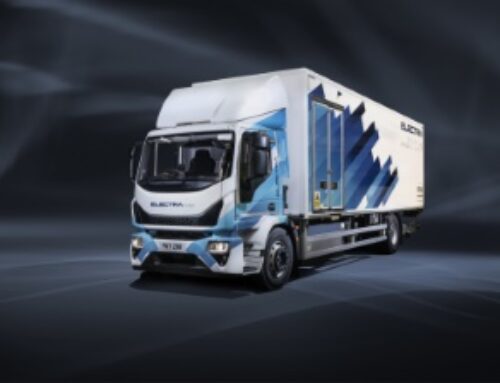Oiling efficiency
 Karl Rudman, business development manager at Petro-Canada Lubricants Europe, discusses the role lubricants can play in improving fuel economy
Karl Rudman, business development manager at Petro-Canada Lubricants Europe, discusses the role lubricants can play in improving fuel economy
In today’s marketplace, business and operating conditions are undoubtedly becoming tougher for fleet managers. While the industry is predicted to experience strong growth, fleet managers and owner-operators have highlighted both changing emissions legislation and fuel price fluctuation as the main issues posing a challenge to the industry.
For fleet managers, while the operational demands of each fleet are unique, the need to keep costs down is universal. The expectation is to maintain high standards of reliability, efficiency and safety, while also reducing expenditure and remaining price competitive.
Policymakers have certainly set their sights on lowering carbon emissions in recent years and evolving legislation has had a big impact on the heavy-duty diesel engine market. HGV original equipment manufacturers (OEMs) have made significant progress in cutting vehicle emissions. A single heavy duty on-road truck manufactured in 1983 generated roughly the same emissions as around 50 HGVs manufactured in 2013.
Since those improvements, the new Euro 6 standard has been implemented, which aims to increase that number even further with more stringent emissions limits.
Whilst emissions legislation has been tightening, fuel price volatility has also created an increased appetite among fleet operators for more fuel-efficient vehicles. With approximately 35 per cent of operational costs for fleet operators attributed to fuel, even small decreases in fuel consumption can have a significant impact on business bottom lines.
There is a great deal of interest from fleet managers and owner-operators regarding the role lubricants play in fleet management. Lubricants can improve fuel economy and enhance engine performance and protection. This is achieved through minimising metal-to-metal contact between moving components, while also reducing pumping and spinning losses.
Due to the oil’s lower viscosity, it requires less work to move through the engine and therefore flows faster. Also, newer engine types, running at higher temperatures, can stress conventional lubricants and accelerate the rate at which the oil oxidises and degrades.
To address these technical challenges, the newer oils on the market have been designed to offer greater resistance to oxidation, aeration control and provide better shear stability. And because they have been formulated to reflect current and future engine hardware needs, they can deliver improved fuel economy for end users whilst also reducing maintenance costs.
To this end, the industry is trending towards high-performance, low viscosity engine oils.
Of course, fuel economy gains are not made simply through changes to engine design or the choice of oils used.
OEMs and fleet managers and owner-operators must also consider the overall driveline efficiency of their vehicles – from wheel selection, to the driveshaft installation angle and transmission design, right down to the choice of lubricant for specific operating condition. There are many individual components to the driveline that impact on fuel economy.
At Petro-Canada Lubricants, we are extensively field testing in this area to demonstrate the real-world benefits of our product line – Duron Next Generation. We’ve conducted trials to determine the durability, extended drain time and fuel economy improvements offered by our high-performance oils.
In addition to the engine oil, for instance, we believe there is potential to improve fuel economy by using lower viscosity Automotive Gear Oils, provided that the final formulations still maintain the same level of protection to axles and transmissions.
 Through controlled field testing and rig testing, we’ve shown potential of up to 2.25 per cent fuel economy improvement between Synthetic SAE 75W-90 gear oils (like Traxon) compared to SAE 85W-140 gear oils.
Through controlled field testing and rig testing, we’ve shown potential of up to 2.25 per cent fuel economy improvement between Synthetic SAE 75W-90 gear oils (like Traxon) compared to SAE 85W-140 gear oils.
The truth is that each part of the driveline can impact on the efficiency of the system entire, and the subsequent fuel economy achieved. However, small improvements, or marginal gains, at each stage of the driveline can add up to a big fuel economy improvement overall.
While there is a complex mix of factors behind fuel economy, the type of lubricant used can certainly play a part. The early adoption of lubricants that promote fuel economy creates an opportunity for the proactive fleet manager to both reduce their fuel costs and improve the performance of their fleets, and for the wider industry to meet its ambitious reduction targets.
Fleet operators would be advised to discuss with their OEM and consult with them for specific guidance regarding the recommended viscosity grade for their engines and which sub-category will be best suited for their business.











